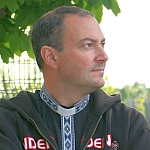 Ian Adams tells us about changing the landscape: making the mixed economy work.
Ian Adams tells us about changing the landscape: making the mixed economy work.
I love it whenever I discover traditional and evolving streams of church
- seeing each other as partners in the same amazing calling, diving into the flow of God's reshaping of the world in the way of Jesus;
- seeking out insights, imagination and wisdom from the other;
- practising generosity in spirit and in resources to each other;
- honouring each other's paths and distinctiveness;
- recognising our own weaknesses and idiosyncrasies while looking for the best in each other;
- and inspiring each other to engagement in mission with the world, as it is, where we are.
So I'm really looking forward to the Fresh Expressions day conference Changing the landscape: making the mixed economy work in Oxford on Friday 6 May. It will be great to hear stories and experiences from people working imaginatively in both conventional and innovative settings – and it's good and appropriate that this is not just a 'from the front' event. There will be spaces for everyone to get involved in the conversation.
I'm also looking forward to hearing how some of those with the widest overview sense the mixed economy is progressing and how it could develop – people like Stephen Lindridge, Fresh Expressions' Connexional Missioner for the Methodist Church; Archbishops' Missioner and leader of the Fresh Expressions team, Graham Cray; and the Archbishop of Canterbury, Dr Rowan Williams who – of course – first coined the phrase 'mixed economy'.
I'm hoping that it will be a great opportunity to ask some of the tougher questions of ourselves, like:
- can the mixed economy really work on the ground, particularly when financial resources are being squeezed?
- how are both streams of church continuing to engage with people from little or no faith background?
- can we provide light and freeing frameworks that give lay people the confidence and support to start and sustain new communities and projects?
- how is the mixed economy enabling us to make a real difference in society in these demanding times?
Great opportunities, demanding questions. So it's vital that the conference will be not only just (or even mainly) about our words, but also a place of stillness and prayer where we can be open to the presence of God-who-is-close. 24-7 Prayer will facilitate this by providing a continuous prayer environment. Something else to look forward to.



 Ed Bahler argues that bigger isn't always better.
Ed Bahler argues that bigger isn't always better.
 Paul Dunstan asks what a sprout is for.
Paul Dunstan asks what a sprout is for.
 David Muir asks where we are, ten years on from the end of the decade of evangelism.
David Muir asks where we are, ten years on from the end of the decade of evangelism.
 Phil Wood discusses church with boots on.
Phil Wood discusses church with boots on.
 Pete Hillman is asking for the skills for us to be entrepreneurs.
Pete Hillman is asking for the skills for us to be entrepreneurs.
 Steve Taylor describes fresh expressions, Aussie style.
Steve Taylor describes fresh expressions, Aussie style.
 This contemplative ministry is twofold, involving the hidden area of prayer and the more visible task of trying to nurture community locally. Tessa Holland, who lives in Sussex as a contemplative-in-action, tells us more.
This contemplative ministry is twofold, involving the hidden area of prayer and the more visible task of trying to nurture community locally. Tessa Holland, who lives in Sussex as a contemplative-in-action, tells us more.
 Matt Stone asks whether fresh expressions of church are fishing nets or safety nets.
Matt Stone asks whether fresh expressions of church are fishing nets or safety nets.
 Sally Nash explores the faith of Generation Y.
Sally Nash explores the faith of Generation Y.